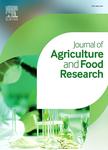版权所有:内蒙古大学图书馆 技术提供:维普资讯• 智图
内蒙古自治区呼和浩特市赛罕区大学西街235号 邮编: 010021

作者机构:Zhongkai Univ Agr & Engn Acad Contemporary Agr Engn Innovat Guangzhou 510225 Peoples R China Guangdong Polytech Normal Univ Acad Interdisciplinary Studies Guangzhou 510665 Peoples R China Zhejiang Univ Coll Biosyst Engn & Food Sci Hangzhou 310058 Peoples R China
出 版 物:《JOURNAL OF AGRICULTURE AND FOOD RESEARCH》 (J. Agric. Food. Res.)
年 卷 期:2021年第5卷
基 金:National Natural Science Foundation of China Natural Science Foundation of Guangdong Province, China [2020B1515120070, 2021A1515010824] Planned Science and Technology Project of Guangdong Province, China [2019A050510045, 2019B020216001 201904010206, 2021A0505030075] Planned Science and Technology Project of Guangzhou, China [202002020063, 202007040007] Innovative Project for University of Guangdong Province, China [2019KTSCX065] Rural Revitalization Strategy Project of Guangdong Province, China [2019KJ138]
主 题:Potato disease Disease recognition Early blight Late blight Image segmentation Graph-cut algorithm
摘 要:Late blight and early blight are the most destructive diseases for potatoes. It is valuable to distinguish diseases and their degrees of infection on potato leaves for timely prevention. This study investigated an accurate recognition method for detecting the disease type and degree of infection from potato leaf images. To segment the leaf from the images efficiently and accurately, an automatic scheme for the graph-cut algorithm is developed. The seeds of the foreground were extracted by Otsu thresholding, and the seeds of the background were extracted by color statistical thresholding on a* and b* components. To remove the backgrounds that have similar color as the infected patch, the superpixels that neighbor the outline of the leaf will be iteratively eliminated when their entropies are far from those of the major part of the leaf. Then, the color features were extracted from the individual channels of the L*a*b* on the refined region of interest (ROI), and the texture features were extracted using a local binary pattern (LBP). Finally, four classifiers based on the k-nearest neighbor (k-NN), support vector machine (SVM), artificial neural network (ANN) and random forest (RF) methods were adopted to evaluate the performance for recognition of potato disease. The performance of the proposed method was evaluated on 2840 images of healthy and diseased potato leaves. The segmentation results showed that the average intersection over union (IoU) was 93.70% for the five classes. For disease classification, the SVM classifier achieved the highest overall accuracy of 97.4% compared with k-NN, ANN and RF. For the degree of infection classification, and the SVM classifier achieved the highest overall accuracy of 91.0%. To enhance the classification performance, a combination of six types of features was evaluated. The results showed that SVM achieved the highest overall accuracy of 92.1% with the combinations of a local binary pattern (LBP) on the a* component, LBP on the